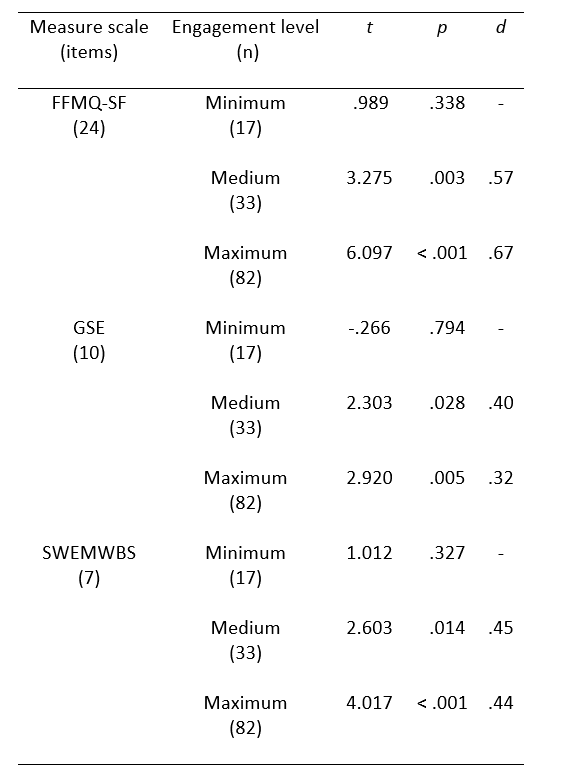I have done 9 paired t-tests, to see if there are significant changes in pre and post measurements of three variables (FFMQ-SF, GSE, WEMWBS), across three groups (Engagement level: minimum, medium, maximum). See the attached table.
I believe that to protect from Type 1 errors, I must conduct a bonferroni correction in which the critical significance level of .05 is adjusted. Question 1: Do I need to do this?
To perform a Bonferroni correction, one should divide the critical p-value by the number of comparisons being made. But I don't know whether I should divide 0.05 by 3 or by 9. I conducted 9 t-tests, but 3 for each scale/group. Question 2: what is the correct option?
Question 3: Finally, am I correct in thinking that I should convert my p-values into adjusted p-values by multiplying by either 3 or 9?

